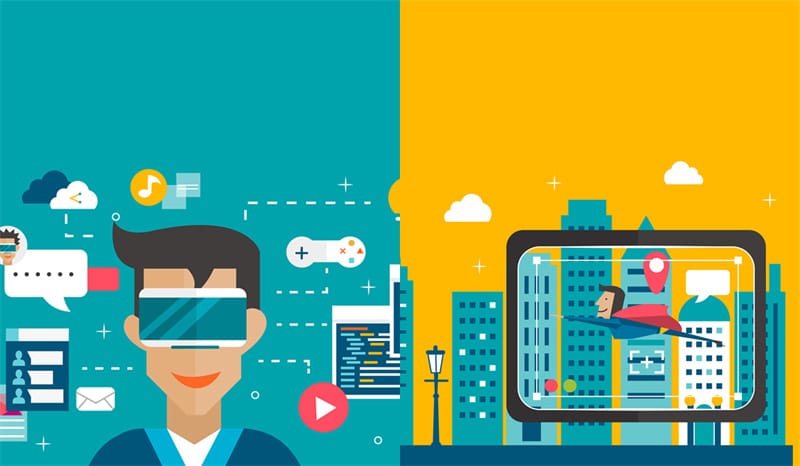
The pandemic brought global upheaval, and the education industry was among the most affected sectors. With the onset of COVID-19, there was a need to develop new learning approaches.
The primary reason for this was that most schools worldwide had to shut down to keep students safe. Subsequently, these restrictions created a necessity for revolutionary ways to ensure that learning would still take place.
As a direct consequence, several significant advancements in the form of digital solutions in the education sector mushroomed. Good examples are; a migration from physical to online learning, the use of learning apps, and hybrid learning. Moving forward, these and other trends are expected to continue helping students keep up with their academics.
Technology has infiltrated every industry, not just the education sector. It applies to online casinos where you can play, taking advantage of offerings like the Springbok casino bonus and the e-commerce industry in the shape of online shopping, etc. Digital solutions were necessary during the height of the pandemic, and they still are now when things are resuming normalcy.
Here are some learning trends that are still dominating in 2022.
1. Augmented and virtual reality

VR and AR technology is coming into the classroom. For an immersive VR experience, you will typically need a pair of VR headsets. With this technology, it will be possible to view projected images and see a virtual or real world. VR and AR also allow lecturers to use gesture controls when teaching quickly. So students can share projects and graphs with their fellow peers.
You can even comfortably stream lessons from your institution. Additionally, students can access AR easily through their tablets or smartphones. Virtual reality enables the projection of images, video, and sound, through the camera, and these photos are displayed on your screen.
Unlike VR, AR technology layers such images on top of what is visible through the camera. Learners can benefit greatly by incorporating these technologies into their learning process. For instance, institutions can use VR and AR technologies for virtual careers, which is where you learn about different career opportunities in the job market.
Through these innovations, you get a firsthand experience of what it is like to be in a particular professional field. VR and AR technology can also improve learning experiences via high-tech training. High-tech training will immensely help anyone pursuing a career in areas such as medicine and architecture.
For example, students can access real-life training by seeking 3D drawings of structures and the entire body anatomy.
2. Nanolearning
This is another learning trend that is likely to continue featuring in 2022. The information age has brought a wave of declining attention spans and increasing screen fatigue. Your brain is constantly bombarded with notifications and alerts to distract you. All these lead to a physical inability to concentrate because of increased cortisol.
The answer to this predicament is Nanolearning, a solution that aims to provide learners with smaller amounts of information over shorter periods. You are more likely to take in and retain bite-sized information better than large chunks of information. Nanolearning helps increase attention spans, productivity, and learning abilities.
This technology is also helpful in that it identifies your needs and helps students set their learning objectives. Finally, thanks to Nanolearning, you are better equipped to choose your learning content, be it apps or videos, while keeping it short.
3. Online learning

Online schooling was the most popular trend in 2020 and 2021, and it is apparent that this will be the case moving forward. With the closing down of schools due to the pandemic, many students and institutions began experimenting with online learning. Online learning platforms make it possible to submit assignments, have a virtual classroom, and engage with the lecturer without needing to be physically present in the same location.
With the current developments in education technology, teaching large groups at once online is a possibility today. Online learning has also gained popularity for being cost-effective and flexible. With the concept of physical location scraped, students can have access to learning resources, regardless of location.
4. Experiential learning
The engagement levels of students have been proven to be on a decline in recent years. It is now much easier to be distracted by their phones or lose concentration, especially when accessing classes online. For this reason, the experiential learning approach has become popular among schools worldwide.
This type of learning immerses students in real-life situations. There are several experiential learning experiences that can benefit students of all age groups. The first is collaborative exercises, where students are provided with debates or problems to optimize their learning experiences. When you start working on them, you are then supposed to come up with solutions and ideas as a team.
Another is fieldwork, where lecturers can instruct learners to collect data for a specific project. In this case, you can carry out surveys online and then present them in class.
The bottom line
These are just some innovations likely to trend in academia for the next few years. They aim to improve the learning experience for all students even when the learning environment changes because of unavoidable circumstances.










